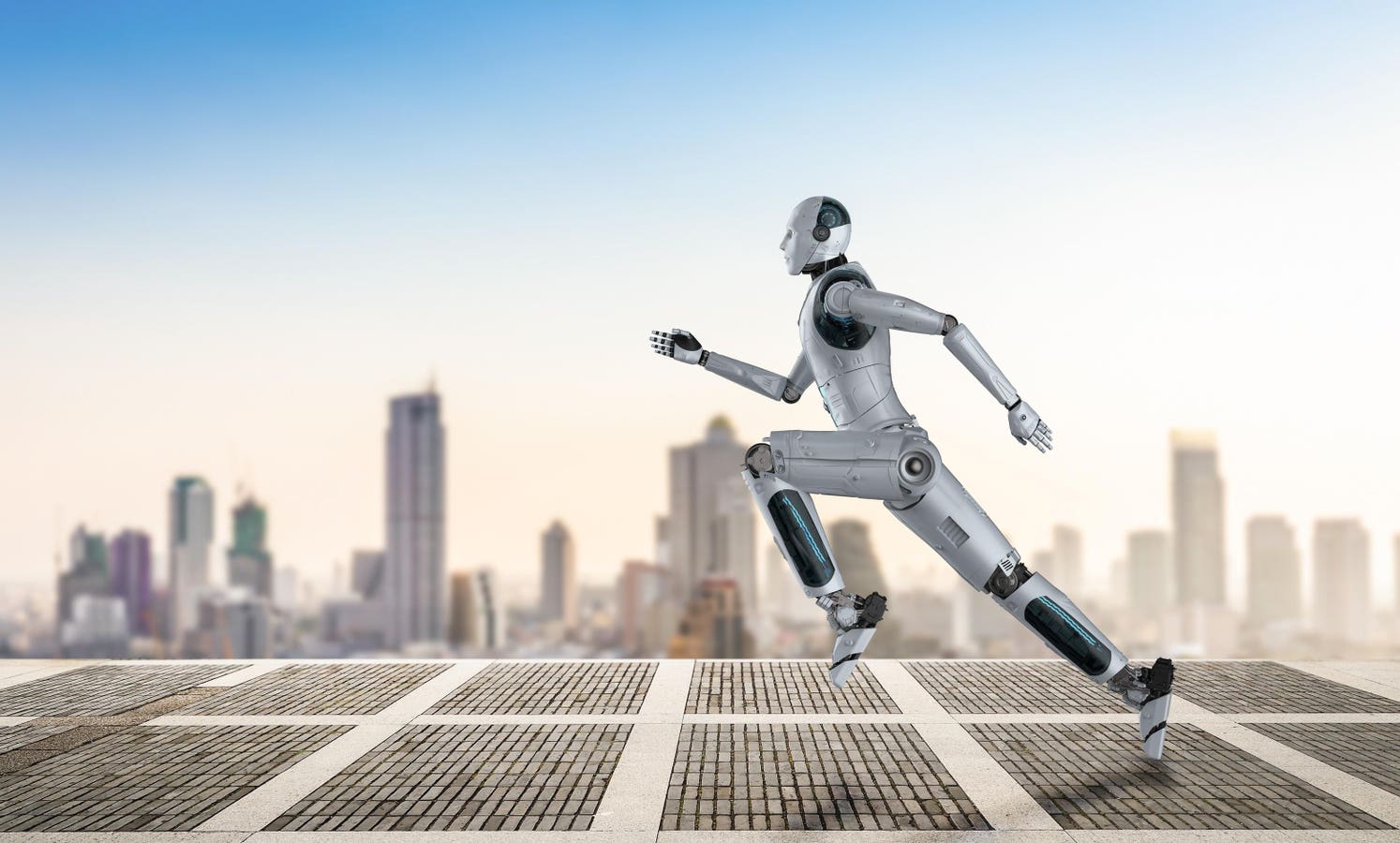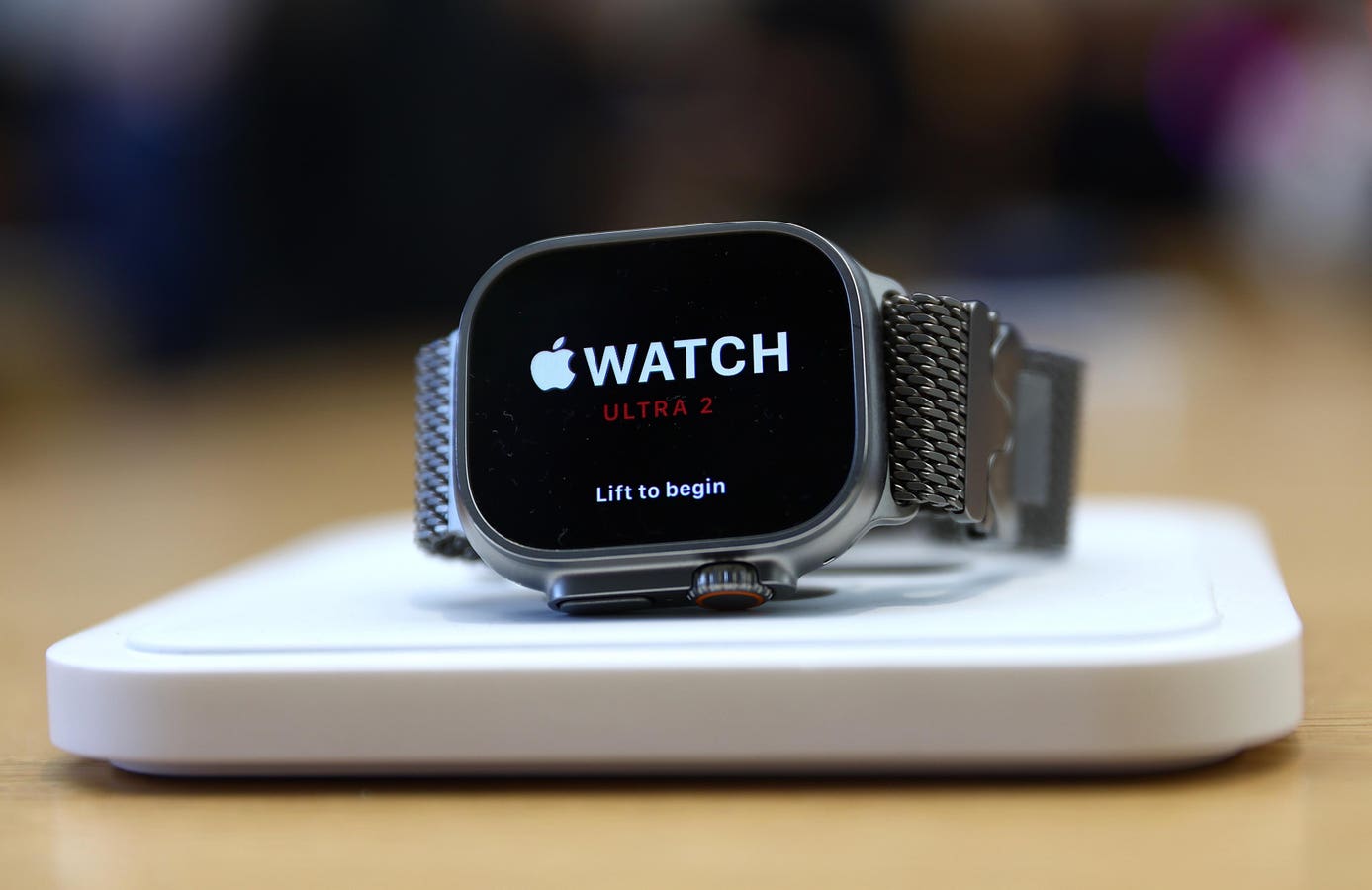3d rendering humanoid robot running or jumping with cityscape background
It’s official – over the weekend, the Middle Kingdom’s capital city had its first half-marathon race in which humans ran side-by-side with a number of, well, non-human “humanoid” participants.
It’s an interesting case study in what happens when we make big steps with robotic technology.
There was the N2 from Noetix that’s over 40 pounds, stands 3 feet tall, and can apparently do backflips. Unitree entered the G1, which is about twice that weight, and stands around 4 feet tall. Much smaller humanoids also competed, as did one robot on a stand with fans propelling it forward.
By the Numbers
There were more than 12,000 people, but only 21 humanoid robots, involved in the half-marathon activity, and although the government noted that the robot participants went under “intensive training” before the race, not all of them finished the entire course.
The winner – a model built at the Beijing Humanoid Robot Innovation Center, ran the course in two hours and 40 minutes. This robot goes by the name Tiangong Ultra, or alternately, Sky Project Ultra.
Some of these robots even wore running shoes and track suits.
From some quarters, the response was ebullient.
“This represents a technological and engineering milestone,” ZongZe Wu, a research associate at Tsinghua University’s Institute for Artificial Intelligence International Governance, said in a press statement. “Although humanoid robots still have a long way to go, simply completing a course of this distance is a remarkable feat.”
For similar enthusiasm, or at least acknowledgement of a milestone, Wired coverage quotes Alan Fern, a robotics professor at Oregon State University: “Until five years ago or so, we didn’t really know how to get robots to walk reliably. And now we do, and this will be a good demonstration of that.”
How Do They Run?
Watching footage of the race, in which human handling teams shuffled next to many of the robots, you could see that there’s still a long way to go in making robots that can really move their bodies in a fully human way.
On the other hand, you can see how they’ve made enormous strides, (no pun intended), in building robots that can actually run for a long period of time, with consistent range of motion, and balance, up to a point.
You can watch the winning robot break the tape at the finish line. You can also watch robots falling over and failing spectacularly. So there are conflicting images of how well robots do in a race. But overall, it’s clear that in the right conditions, they can do very well.
The March of Progress
If robotics is anything like the emergence of LLMs themselves – and there’s every reason to think that it is – we’re going to get exponentially better technology as the years go by on a sort of hockey stick or S-curve projection.
The Beijing event shows how Chinese culture is getting serious about acknowledging the capabilities of robots who will soon walk among us. When you see people standing with the robots in a ceremony after the race, you get a glimpse of what this is going to look like as we accept our mechanical brethren.
America, as experts note hasn’t been quick to catch up in his particular aspect of AI development.
Globally, though it’s only a matter of time until robots start doing a lot more human things alongside their flesh and blood counterparts.








